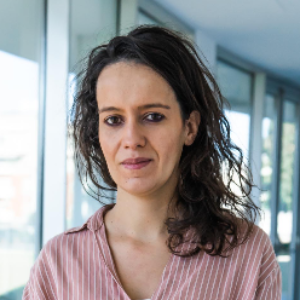Title : Influence of the crystalline phase of Cu/Pd based metal oxides on the catalytic reduction of nitrate in water
Abstract:
The catalytic behavior of materials in liquid-phase hydrogenation of aqueous nitrate depends on the metallic phase, preparation procedure and nature of support, which greatly impact on the surface atomic arrangements and formation of bimetallic particles. The drawback of water-phase nitrate reduction by supported Pd/Cu catalysts in the current use is the formation of te by-product ammonia, which is undesired in water1,2. However, it has been reported that the Pd/Cu ratio in the catalysts markedly affects both the nitrate removal activity and the ammonium formation3. In this work, it was studied the relation between the structure, stoichiometry and catalytic properties of the metallic particles during nitrate reduction in the presence of hydrogen. Understanding these properties is of utmost importance for designing catalysts needed for successful industrial application. For that, Pd/Cu catalysts supported on alumina oxide with different textural, morphological and chemical properties were prepared. Alumina nanofibres using sol-gel and hydrothermal approaches and also a commercial alumina (provided by Saint Gobain) were use as support.. Several functional groups were introduced in order to change the chemical nature of the commercial material. Three different methods were used to incorporate the Cu/Pd on the alumina nanofibers prepared by the sol-gel approach: (1) impregnation of copper on the suppor, followed by calcination process, impregnation with palladium followed by a reduction process with hydrogen (Method 1); (2) impregnation of copper followed by a dry step and after impregnation with palladium and reduction with H2 (Method 2); (3) impregnation with copper and palladium at same time followed by reduction step with hydrogen (Method 3). In the case of the metal oxides supports copper and palladium were deposited by sequential or co-impregnation methodologies. In both types of supports, the content of metals was mantained constant (1 %wt. of each metal). The experiments were carried out in a semi-batch reactor using a NO3 -concentration of 100 ppm, under H2 and CO2 flows, as reducing and buffer agents, respectively, at room temperature and atmospheric pressure. The prepared materials were characterized by X-ray diffraction, nitrogen adsorptiondesorption isotherms at -196 ºC and transmission electron microscopy. It was demonstrated that the method used to impregnate the metals directly influences the crystalline phase obtained. The materials prepared by Method 1 and Method 2 present the same crystalline phase, Cu0.35 Pd0.65 (ICDD 04-008-0166) and the materials by Method 3 present the crystalline phase of Cu0.96 Pd0.04 (ICDD 04-008-6249). The catalytic experiments revealed that the crystalline phase of the materials was a direct influence in the nitrate conversion achieved and also in the ammonia selectivity. In addition, the surface chemistry of the supports also has an important role in the catalytic performance of the materials developed.
Audience take away:
- Funcionalization of metal oxides with different organic groups
- Procedures of incorporation of differents ratios of Cu/Pd
- Problems associated to the presence of nitrates in the water



